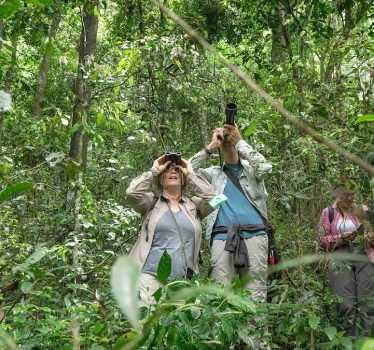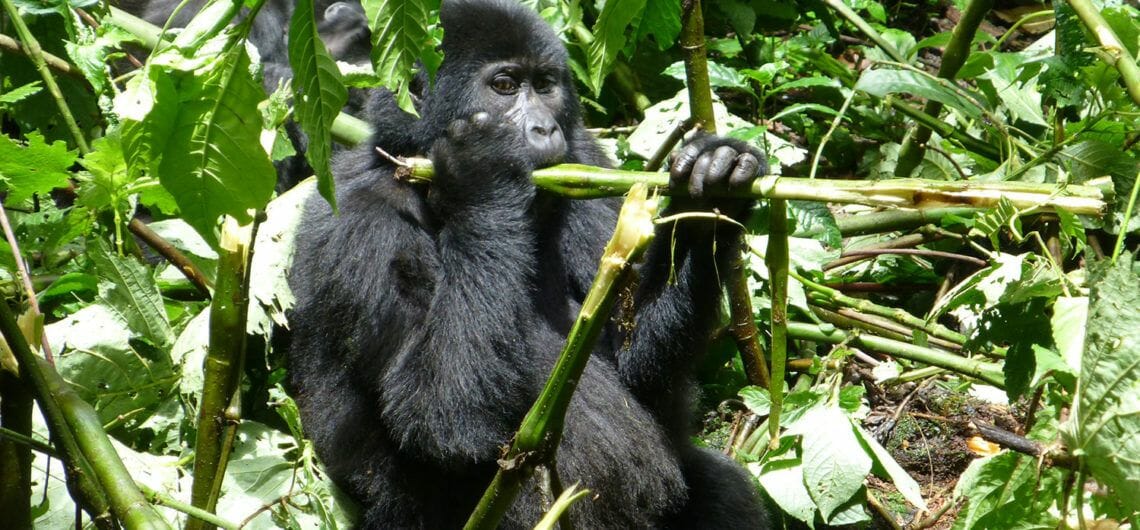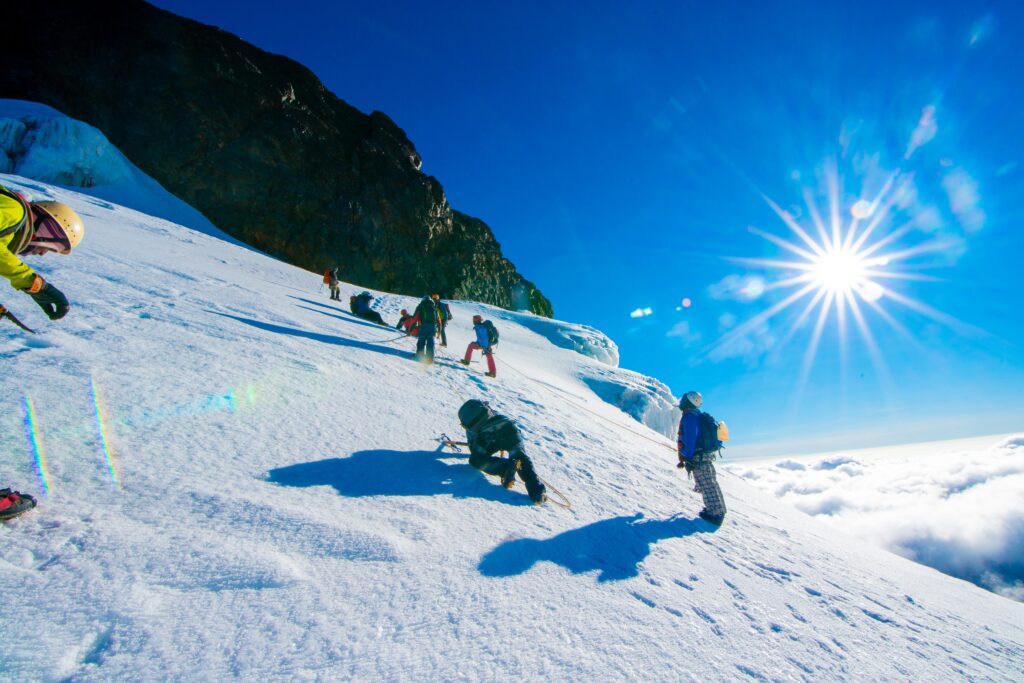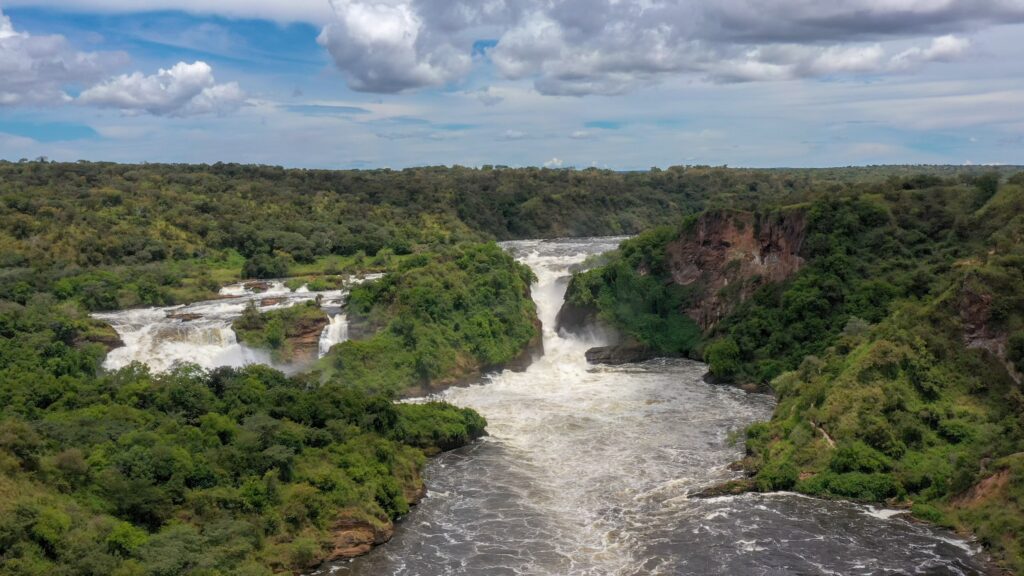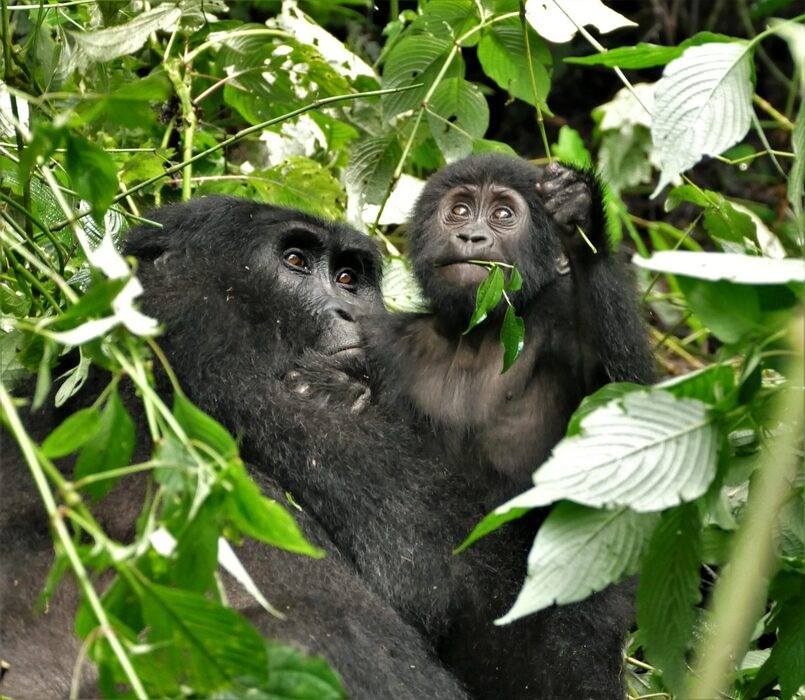Big 5 | 7 Days
Big 5 | 7 Days
Overview
A week-long journey designed in collaboration with Positive Impact Tourism experts to create lasting benefits for both travelers and communities. Through thoughtfully chosen experiences – from sustainable agriculture to rhino conservation – this itinerary transforms traditional safari encounters into opportunities for positive change, while showcasing Uganda’s iconic wildlife and rich cultural heritage. Each activity has been selected to ensure tourism revenue directly supports local development and conservation initiatives.
Trip Highlights
- Track endangered rhinos and support conservation at Ziwa Rhino Sanctuary
- Experience sustainable farming practices and support local agriculture initiatives
- Learn traditional drum-making from master craftsmen at Mpambire
- Witness the spectacular Murchison Falls and its diverse wildlife
- Support women's empowerment through community craft initiatives in Masindi
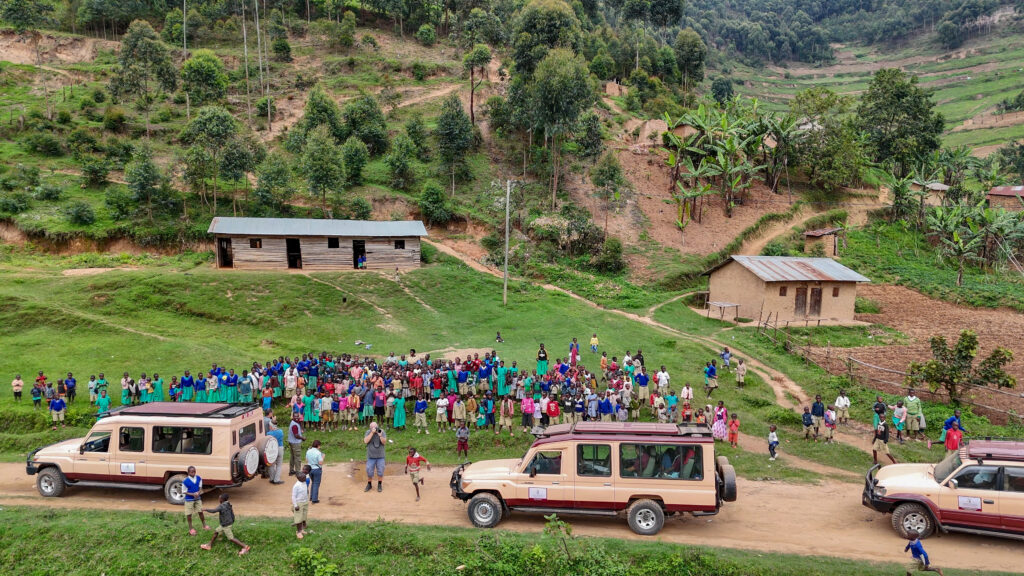
Information
Trip Info

Murchison Falls National Park
Marvel at the world’s most powerful waterfall and see lions, elephants, and giraffes on safari.

Ziwa Rhino Sanctuary
Walk with rhinos and learn about conservation efforts in Uganda’s only rhino sanctuary.
Dry Seasons in Uganda – December to February, June to August
During these months, the weather is generally warm and pleasant, with average temperatures ranging from 25°C to 29°C (77°F to 84°F) during the day. The average rainfall per month ranges from 46mm (1.8”) to 86mm (3.4”). It is an ideal time to visit for wildlife safaris and gorilla trekking, as the drier conditions make it easier to navigate through the national parks.
Wet Seasons in Uganda – March to May, September to November
This period experiences relatively higher precipitation, with rainfalls ranging from 86mm (3.6”) from September to November to averages of around 147mm (5.8”) from March to May. The rainforest landscapes become lush and vibrant during this time, but it’s important to note that travel conditions can be more challenging due to occasional heavy rains and muddy trails. However, the rainy season also offers unique opportunities for birdwatching and witnessing the spectacular waterfalls at their fullest.
Best Times To Spot Wildlife in Uganda
In Uganda, game viewing in Bwindi Impenetrable Forest, Queen Elizabeth National Park, Kibale National Park, and Murchison Falls National Park is excellent December through February and June through October. In November and March it is good, and it is fair in April and May.
Itinerary
Trip Itinerary
Arrival in Entebbe
- Entebbe, Uganda
Welcome to Uganda! Your driver-guide will meet you at Entebbe International Airport and transfer you to your accommodation for a restful evening.
- Gorilla Neighbour Guest House
- Half Board
Sustainable Agriculture and Cultural Heritage
- Mpigi District, Uganda
Morning immersion in eco-friendly farming practices at a sustainable farm in Mpigi district. Participate in hands-on activities from planting to harvesting, supporting local farmers’ transition to sustainable methods. Afternoon cultural experience at Mpambire Royal Drum Makers, where you’ll learn traditional drum-making techniques and participate in drumming sessions, helping preserve this vital cultural craft.
- Sina Village
- Half Board
Wildlife Conservation Initiative
- Murchison Falls National Park, Uganda
Journey to Ziwa Rhino Sanctuary, Uganda’s only wild rhino habitat. Participate in rhino tracking while learning about crucial conservation efforts to restore the country’s rhino population. Support this vital work through direct contributions before continuing to Murchison Falls National Park.
- Pakuba Safari Lodge
- Half Board
Murchison Falls Experience
- Murchison Falls National Park, Uganda
Morning game drive searching for the park’s diverse wildlife including lions, elephants, leopards, buffaloes, and giraffes. Afternoon boat cruise to the base of the magnificent Murchison Falls, witnessing one of Uganda’s most spectacular natural wonders.
- Pakuba Safari Lodge
- Half Board
Community Enterprise Support
- Masindi, Uganda
Begin with a final game drive and visit to the top of Murchison Falls. Travel to historic Masindi town, where you’ll engage with a women’s craft cooperative. Support sustainable local enterprise through participating in craft-making activities and material sorting, with opportunities to contribute directly to their development initiatives.
- Masindi Hotel
- Half Board
Historical Heritage to Entebbe
- Entebbe, Uganda
Explore Uganda’s oldest hotel, the historic Masindi Hotel, before returning to Entebbe. Support local enterprise through lunch at a family-owned restaurant en route.
- Gorilla Neighbour Guest House
- Half Board
Departure Day
- Entebbe, Uganda
Choose between a nature walk in the Botanical Gardens or supporting local artisans through purchases at the crafts centre before your departure flight.
- Breakfast
The Beauty of Africa
Gallery
Itinerary
Trip Details
Inclusions
- Vehicle and fuel
- All accommodation
- Airport transfers
- AMREF Flying Doctor Service
- Meals as per plan
- Park entrance fees
- Professional driver-guide
- Drinking water
- Fruits along the road
- Prepaid phone
- Ugandan Rolex snack
- All listed activities
Exclusions
- International flights
- Visa
- Insurance
- Personal expenses (laundry, tips, etc.)
- Optional activities
- Donations
Prices
-
2 people (1 Double Room) $3,225/person
-
4 people (2 Double Rooms) $2,519/person
-
6 people (3 Double Rooms) $2,245/person
Our tailor-made trips are designed to offer you the best possible value to make your East African safari experience a memorable one. As a boutique tour operator, we are happy to personalise your trip budget and package according to your needs.
Please treat all pricing as a guide only, as customisations made to this itinerary, style of travel, and number of guests may raise or lower the overall cost. All rates are subject to availability and may change without notice. Single supplements may apply.
For the best, most current rates available, request a quote or speak to one of Kikooko Africa Safari’s travel experts.

Warren Anwkasa,
Founder, Kikooko Africa Safaris
Inquire About This Tour
All our itineraries can be adapted to suit your personal interests and preferences.
Please feel free to discuss these with us so we can personalise your tour for your maximum enjoyment.
For the most current rates for your party, request a quote or speak to one of Kikooko Africa Safari’s travel experts.
What Our Guests Say
Verified Uganda by Kikooko - a unique experience Uganda's tourist potential is vast and to a large degree unspoilt. Kikooko as a whole and our tour guide Alex in particular gave us a truly unforgettable insight into the wonders of this amazing country. We were treated as friends and got to see the amazing variety of flora and fauna, enjoyed great places to stay and eat and, above all, experienced the friendliness of the Ugandan people. Every detail of our journey was perfectly planned and organized, and Alex displayed his passion for his profession and the country. Great experience, excellent service, passionate people!Verified Safari Company with heart and soul I met the founder of Kikooko at the travel fair in Zurich and told him about my dreams of Uganda and the Gorillas. He arranged a wonderful overland journey for me that was filled with activities around wildlife and culture. The driver-guide was friendly and professional, his knowledge and helpfulness great. I could just relax and feel safe and comfortable allover the country. Also traveling alone as a woman was no problem at all. People in Uganda are friendly and openhearted. Most of the lodges that were chosen for me were situated at beautiful spots and with delicous food. I can highly recommand KIKOOKO as a professional, trustworthy Safari Company with heart and soul. January 24 / Claudia FauserVerified Es gab so vieles zu entdecken und Neues zu lernen. Es war Abenteuer pur! Die Reiseplanung mit Warren erfolgte per Mail. Die geplante Reise dauerte 3,5 Wochen und beinhaltete eine Rundreise von Entebbe zum Kidepo Valley National Park, zu den Gorillas im Bwindi Impenetrable Park bis zum Queen Elizabeth Park und zurück nach Entebbe. Auf Wünsche und Änderungen gingen das Kikooko Team immer ein und machten diverse Abklärungen. Die ganze Planung ging sehr gut und nicht stressig auf. Das Programm war voll mit sehr schönen Abenteuern und Begegnungen, sowohl mit den Tieren als auch mit den Menschen und ihren Kulturen. Die Menschen sind sehr freundlich und hilfsbereit. Sehr beeindruckend fand ich, dass immer sehr freundlich gegrüsst und zugewunken wurde! Kinder riefen und winkten am Strassenrand, teilweise rannten sie uns nach. In diesen 3 Wochen versuchte ich einzelne Wörter zu lernen, da war Ivan ein guter Lehrer, aber es ist eine sehr schwierige Sprache! Ich lernte sehr viel über dieses Land. Während der Reise fühlte ich mich immer sehr gut aufgehoben und sicher. Allein als Frau zu reisen, ist kein Problem. Ivan war ein sehr guter Guide, weiss sehr viel über die Tierwelt und schätzt Situationen gut und sicher ein. Er hat einen sehr angenehmen Fahrstil und umsorgte mich sehr. Ich konnte mir für die Fotografie sehr viel Zeit nehmen und ging immer auf meine Bedürfnisse ein. Lodges: die verschiedenen Lodges waren gut ausgestattet und sauber. WLAN war vorhanden, aber war tw. sehr langsam, je nach Wetter. Bei Dunkelheit wurde man in gewissen Lodges, dort wo Grosstiere wie Nashörner, Hippos, Elefanten oder Löwen zu Hause sind, zur Sicherheit ins Zimmer begleitet. Auto: es ist ein stabiles Auto und hatte diverse schwierige Strassen gut gemeistert (natürlich auch mit den perfekten Fahrkünsten von Ivan!). Ivan hatte es immer sehr sauber gehalten und geputzt. Das Dach liess sich anheben, damit man einen sehr guten Rundumblick hatte und perfekt fotografieren konnte. WLAN wurde kostenlos angeboten, was ich so noch nie gesehen habe. Gerade bei längeren Fahrten konnte man zu Hause ein Update geben und ein paar "Bilderkostproben" im Status hochladen. Handy laden im Auto ist mit Ladekabel und Adapter möglich! Wasser ist jederzeit abfüllbar im Auto parat, dazu wurde am Anfang der Reise von Warren eine Wasserflasche geschenkt, was ein super sinnvolles Geschenk und Erinnerung ist. Süssgetränke, Bier usw. ist alles da. Geld: Schilling lässt sich bei der Ankunft wechseln und Ivan schaut auch, wo der beste Kurs ist. 200 Dollar habe ich gewechselt, aber es ist kein Problem, mit Dollar, Euro oder sogar mit CHF zu bezahlen. Kreditkarten kann leider nur an wenigen Orten verwendet werden. Für jede Leistung von Guides usw. sollte man Trinkgeld gegeben. Es gibt keine ungefähre Definition, wie viel man mindestens geben sollte, denn man gibt, was man möchte. Wenn man sehr zufrieden ist, dann gibt man entsprechend. Das macht es sehr schwierig. Fotografie: die Stromversorgung in den Lodges waren immer gut und alle Geräte konnten problemlos mit dem entsprechenden Adapter geladen werden. Mein 3-Beinstativ habe ich nie gebraucht, da ich sehr gut mit dem Einbein im Auto und auch sonst fotografiert habe und sehr gute Ergebnisse hatte mit dem Teleobjektiv. Gorillatracking: ein 4h Besuch lohnt sich SEHR! Die Zeit zählt ab dann, wenn die Gorillas entdeckt wurde. Da sollte definitiv nicht gespart werden! Erst erwachen sie, gehen fressen und dann ist Chillen angesagt. Das braucht seine Zeit und ich hätte bereut, wenn ich nach 1h wieder hätte gehen müssen. Es war ein unglaubliches Erlebnis!!! Der Silberrücken streifte langsam und dicht an mir vorbei, 180kg geballte Ladung Muskeln! Ja doch, ich hatte etwas wacklige Beine. Die Guides gehen jeden Tag zu den Gorillas und kennen jeden Einzelnen und "kommunizieren" laufend mit dem Silberrücken und er antwortet darauf. Faszinierend! Es gibt keinen Weg im Wald, nur sehr anstrengende und steile Hänge mit sehr vielen Büschen und Stolperfallen. Gamaschen empfehle ich sehr einzupacken. Bei den Schimpansen habe ich es nicht angezogen und hatte dann einige sehr grosse Ameisen unter meinem Shirt und anderen Orten. Sie sind extrem schnell und können ganz schön kneifen, sind aber nicht giftig. Da die Gorillas auf 2200 m Höhe zu Hause sind, wird es gegen Abend/ Nacht kühl. Regenzeit: es ist nicht wie in der Schweiz, wo es Tagelang regnet. Meistens gab es einen 15 min Regenguss und dann kam wieder die Sonne oder es regnete in der Nacht immer wieder. Der Regen war warm. Tiere und Landschaft: einfach sensationell - das muss man gesehen haben! The Big 5 und noch sehr viel mehr durfte ich sehen! Unbeschreiblich schöne Landschaften, von Savanne, Buschlandschaft bis zum Wald. Highlight: alles! Ich komme wieder!Verified Must visit Absolutely epic! Everything exceeded expectations! Came for the Gorillas and they very much delivered. Coordinated by Warren and guided/driven by Alex, they went above to deliver a trip of a lifetimeVerified Gorilla adventure of a lifetime Brilliant trip everything was better than expected, I came hoping to see gorillas and they exceeded expectations as did every day. I couldn't recommend the team more highly.Verified Come with high expectations, and expect them to be surpassed! This was the most amazing 7 days. From the second we landed we were treated to an unforgettable visit. The staff from the company were so accommodating and made sure that everything we did was perfect. There is honestly nothing I would change about my trip.Verified ....a lifetime expierience.... Wir haben Kikooko Africa Safaris auf einer Ferienmesse im Februar 23 kennengelernt. Danach haben wir eine Offerte angefordert, worin wir unsere Wünsche geäussert haben. Auf diese Wünsche wurde super eingegangen und nach einigen Mail/WhatsApp Wechseln mit dem Geschäftsteilhaber entstand unsere Reise. Denoch zögerten wir zuerst ein bisschen- da wir niemanden kannen, der schon mit Kikooko gereist wäre- haben dann aber dank den ausgezeichneten Rückmeldungen und Reaktionen auf Fragen unsererseits, beschlossen, Kikooko zu vertrauen. Der Kontakt zu Warren blieb bis zu unserer Reise hervorragend. Wann immer eine Frage auftauchte, bekam ich sie prompt beantwortet. Wir wurden auch bezüglich der Gorillatrekking Permits usw immer auf dem Laufenden gehalten. Dann endlich Start der Reise. Wir wurden vom Flughafen abgeholt und gleich von einem sehr angenehmen, vertrauenserweckenden Guide in Empfang genommen. Am nächsten Tag kam Warren sogar selber noch vorbei, um uns zu begrüssen. Wir wurden am ersten Tag perfekt ausgerüstet- mit einer LifeStraw Flasche , einem Notfalltelefon und einem Kästchen, mit welchem wir immer gratis WLAN hatten. Chris, unser Guide war einfach perfekt. Er hat unsere Reise einfach super organisiert, an alles gedacht und uns immer vorzu informiert. Zudem wusste er einfach alles über Land, Leute, Vegetation und Tiere- was auf immer wir fragten- Chris wusste eine Antwort. Zudem war seine Gesellschaft äusserst angenehm- ein richtig toller Mensch. Wir haben uns in seiner Gesellschaft immer gut aufgehoben und sicher gefühlt. Die Strassen waren nicht immer einfach zu befahren- entweder wegen Schlamm, Pfützen, Löchern oder wegen viel Verkehr, Tieren oder Menschen. Chris hat uns überallhin sicher geführt. Zudem ist er schon auf unsere Wünsche eingegangen, bevor wir sie geäusster haben - so kam es uns jedenfalls vor... Unsere Camps und Lodgen waren alle wunderschön-nicht nur die gehobeneren, sondern auch die einfacheren. Die Tiervielfalt in Uganda unglaublich- an viele Tiere kann man ganz nahe heran. Die Menschen sind offen, fröhlich und freundlich, die Landschaft unglaublich grün und vielfältig. Ganz spezielle und unglaubliche Erlebnisse waren natürlich das Gorillatrekking und Schimpansentrekking. Ein weiteres unvergessliches Erlebnis war der Besuch eines Dorfes- abseits jeglichen Tourismuses. Es war eine absolut unvergessliche Reise- einfach perfekt von A-Z. Vielen Dank Kikooko African Safaris- wir werden euch jederzeit und allen uneingeschränkt weiterempfehlen- und gerne wiederkommen um eine weitere Reise mit Chris zu unternehmen.... Das schwierigste wird nun für mich, die vielen vielen vielen tollen Fotos so auszusortieren, dass ich ein Fotobuch machen kann..... 🙂Verified Beautiful Uganda An exceptional company that goes above and beyond to guarantee you have an excellent time in Uganda. Highly recommend!Verified Een bijzonder bedrijf met de de beste gidsen What an amazing group of people at this company. They are very proud of their beautiful country and realy want you to feel welcome. They go the extra mile to let you get in touch with the local customs and communities.Verified The only team to book for your Uganda trip Incredible experience from the moment we were picked up from the airport by Alex and Godfried. The team were always professional, reassuring and kind. They are a business that truly cares for its customers and they are right in what they say, arrive as strangers, leave as friends. Highly recommended!Load more


